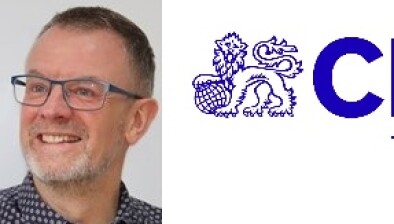Built environment bodies unite to improve inclusion and diversity

Six of the UK’s largest built environment bodies have teamed up to sign a joint agreement committing them to work to create a more diverse, equitable and inclusive sector.
The Memorandum of Understanding (MoU) brings together six organisations from across the sector: the Chartered Institute of Building (CIOB), Institution of Civil Engineers (ICE), Landscape Institute (LI), Royal Institute of British Architects (RIBA), Royal Institution of Chartered Surveyors (RICS) and the Royal Town Planning Institute (RTPI) – collectively representing around 350,000 members.
The agreement focuses on:
- Data collection - To create a consistent approach and standard model that will allow meaningful comparison between and across respective memberships’, and help to formulate a clear picture of the built environment sector more widely.
- Improve understanding of transition from education into employment - To develop a robust, evidence-based understanding of the disparity between the diversity of students that start on institute accredited courses and the talent that makes it into the workforce. To build on existing good practice from individual institutes to improve our collective understanding of retention rates and awarding gaps on accredited courses.
- EDI competencies – To develop understanding and guidance for the sector, supporting organisations, individuals and institutes to improve and maintain professional standards.
Over the next few months, the institutes will work together to produce a detailed plan of work – setting out how each of the objectives will be tackled and start making progress to deliver a more inclusive sector. A collectively agreed action plan will be published later this year.
Caroline Gumble, CIOB CEO, said: “CIOB has, for some years now, recognised the need to urgently improve the diversity of the built environment workforce. Today’s announcement that we are uniting with our sister professional bodies to support initiatives which break down barriers and reduce the impact of bias is a powerful reminder that, in collaborating and working together, we have the potential to drive positive culture change for our sector, for our communities and society.”
Dr Anusha Shah, ICE vice president, membership, signed the memorandum on behalf of the ICE.
She said: “Together, we will work towards achieving a more diverse workforce and one that better represents the society we serve.
“Driven by the ICE Fairness Inclusion and Respect Action Plan, we have worked hard to make sure that underrepresented sections of our communities see civil engineering as a career opportunity and one which provides a broad, diverse and inclusive environment for all, regardless of background.”
LI chief executive Sue Morgan added: “I’m proud that the Landscape Institute is part of this cross-sector partnership. As designers, we seek to transform the world for the better. But to do this, we must understand and represent the interests and experiences of all the communities we serve.
“We know that there are longstanding issues with diversity in the built environment workforce. By identifying the gaps between education and practice, our organisations seek to establish the root causes for this. And by pooling our collective resources and intelligence, as well as standardising our approach to gathering information, we will be able to put this data to best use – addressing systemic barriers and ultimately bringing about real, positive change.”
RIBA CEO Alan Vallance said: “I am really pleased that we are committing to working collaboratively with colleagues across the sector to ensure we deliver on our EDI commitments. By combining our efforts to address the systemic barriers that perpetuate discrimination and underrepresentation, we can drive forward change at a faster and more effective rate.”
Victoria Hills, chief executive of the RTPI, said: “The RTPI places Equality, Diversity, and Inclusivity at the heart of the institute, for our members, the profession, the community and the built environment sector.
“However, we know that we cannot change the sector by working alone. That’s why it is not only a great pleasure to sign this ground-breaking MoU with our friends, but an honour.
“Only by working together can we create a sector as diverse as the communities we work for, and deliver a fair and inclusive culture that works for our members and diverse society.”

















